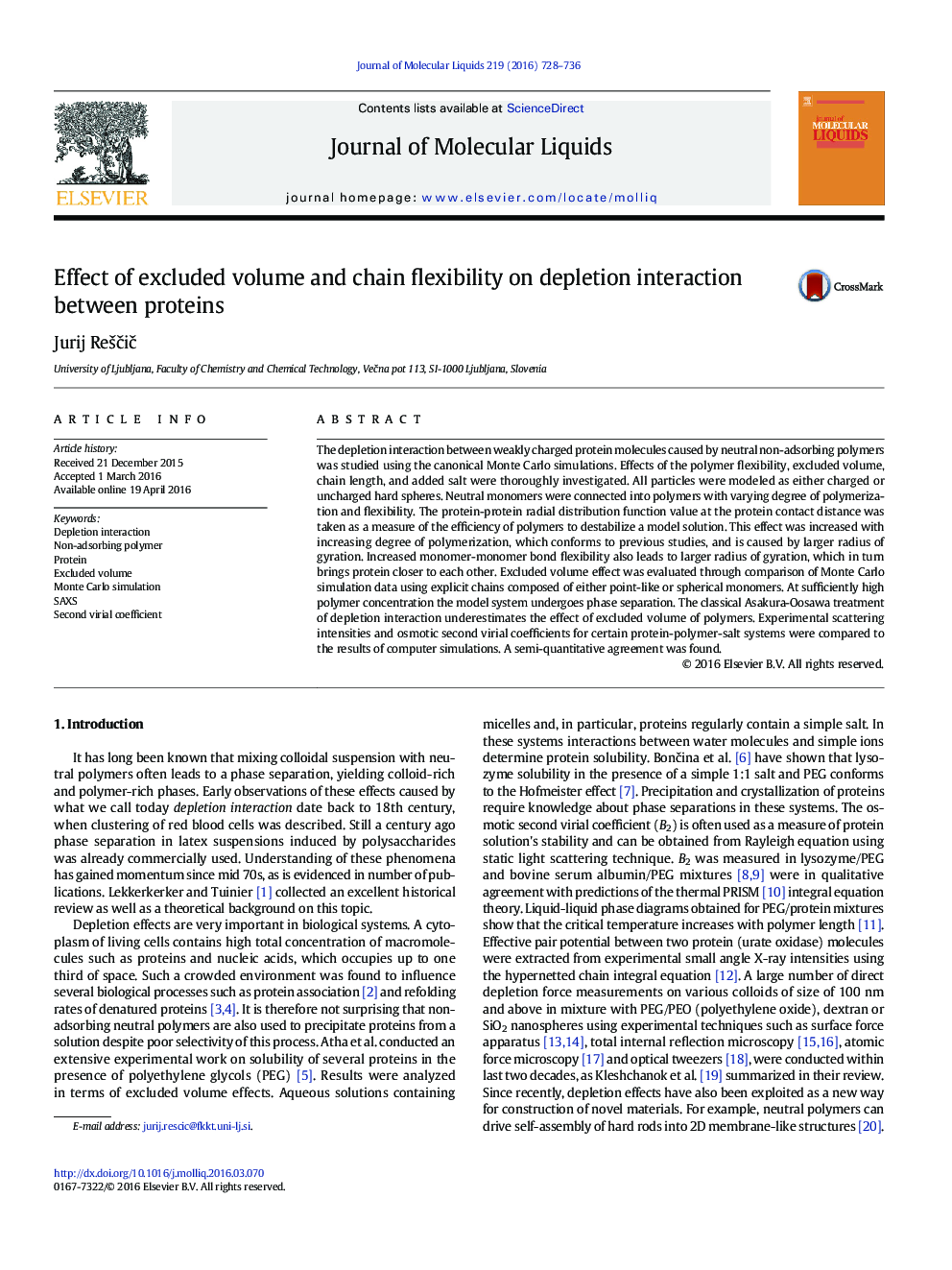| Article ID | Journal | Published Year | Pages | File Type |
|---|---|---|---|---|
| 5410170 | Journal of Molecular Liquids | 2016 | 9 Pages |
Abstract
The depletion interaction between weakly charged protein molecules caused by neutral non-adsorbing polymers was studied using the canonical Monte Carlo simulations. Effects of the polymer flexibility, excluded volume, chain length, and added salt were thoroughly investigated. All particles were modeled as either charged or uncharged hard spheres. Neutral monomers were connected into polymers with varying degree of polymerization and flexibility. The protein-protein radial distribution function value at the protein contact distance was taken as a measure of the efficiency of polymers to destabilize a model solution. This effect was increased with increasing degree of polymerization, which conforms to previous studies, and is caused by larger radius of gyration. Increased monomer-monomer bond flexibility also leads to larger radius of gyration, which in turn brings protein closer to each other. Excluded volume effect was evaluated through comparison of Monte Carlo simulation data using explicit chains composed of either point-like or spherical monomers. At sufficiently high polymer concentration the model system undergoes phase separation. The classical Asakura-Oosawa treatment of depletion interaction underestimates the effect of excluded volume of polymers. Experimental scattering intensities and osmotic second virial coefficients for certain protein-polymer-salt systems were compared to the results of computer simulations. A semi-quantitative agreement was found.
Keywords
Related Topics
Physical Sciences and Engineering
Chemistry
Physical and Theoretical Chemistry
Authors
Jurij ReÅ¡ÄiÄ,
